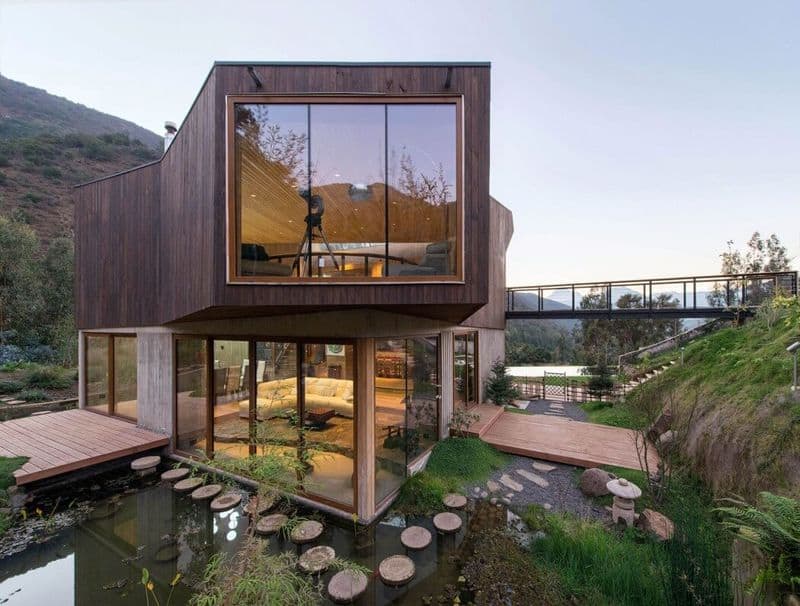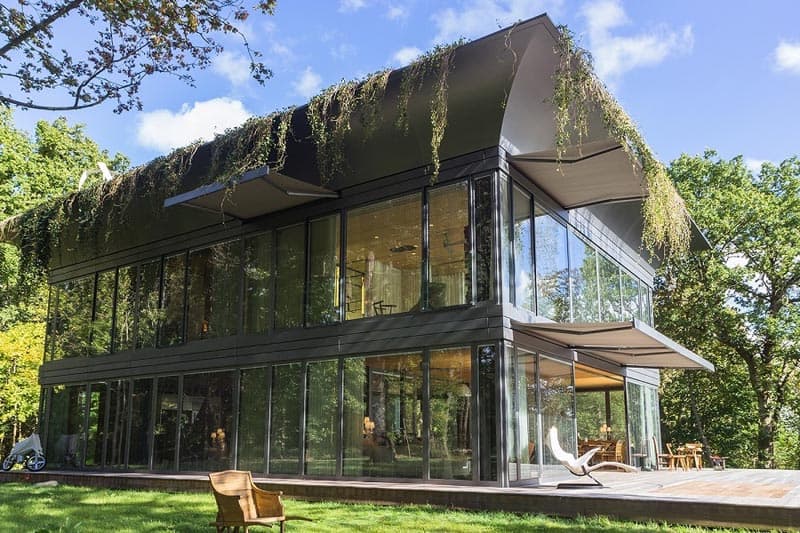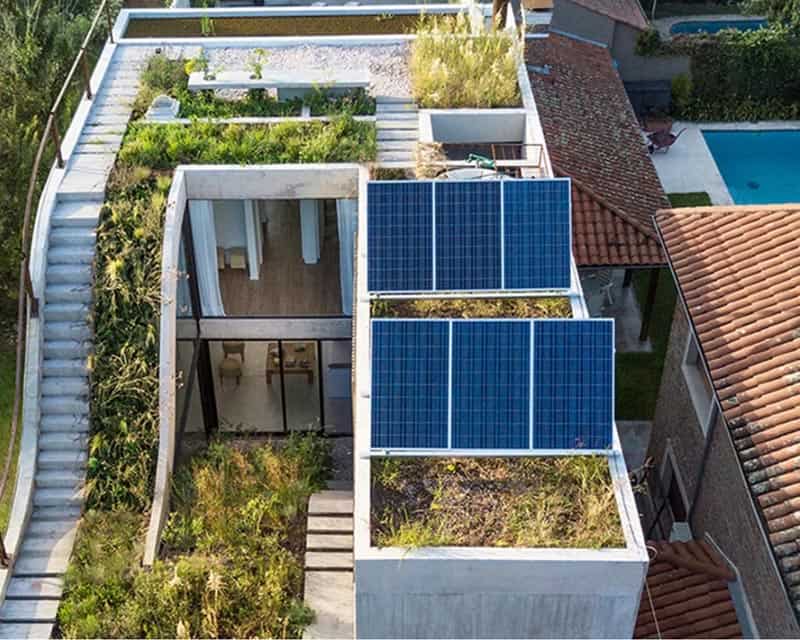We all must do our best to look after the planet and stop global warming. We can reduce our carbon footprint by altering every aspect of our daily lives – from what clothes we wear to the home we live in.
Eco-friendly homes are becoming more common and will hopefully become the homes of the future. If you are considering building an environmentally friendly property, here are some design tips.
Location, Location, Location
The first thing you need to consider when building a home is where you will put it.
When looking for a plot of land, find one that is close to lots of amenities such as shops, medical centers, libraries, sports clubs, schools, and dentists so that you can walk to them rather than taking transport. Doing so will help to reduce your carbon footprint.
Check to see if the land is near rivers that are in danger of flooding or close to other hazards that may cause havoc and result in damage to your house, or worse still, lead to you having to do a complete rebuild.

Size Matters
Smaller properties require fewer materials to build. They also use less fuel and electricity than large homes, so be realistic about how much space you actually need to live comfortably. You will be surprised how well you can live without that spare room or extra bathroom.
The layout of the building matters too. A compact house consisting of two storeys or more has less surface area than a long, spread-out house on one level.
In the Right Direction
The direction in which you position your house is significant. To save on heating costs, you may want to place the windows of your main living areas in a southerly direction so that the rooms benefit from the maximum amount of sunlight. The heat from the sun will heat up your home and flood it with natural light. If you find that the house gets too hot in summer, plant deciduous trees in front of the windows, so the leaves provide shade in the summer months. In the winter, the leaves will drop off and let the sun’s rays shine through.
The Right Stuff
The materials you use to build your house are critical. Try to use recycled, sustainable materials such as recycled glass, reclaimed wood, steel made from recycled metals, and reclaimed bricks and stone.
Basically, you can utilize materials that have been gathered from demolished houses. Surplus turf and soil dug up when constructing the foundations for your home can be used to build up a garden area or vegetable patch.
Check out lumber yards, landfill sites, and wreckers yards for materials you could use to build your home. Be creative and make a feature of second-hand materials. Fashion a stunning kitchen countertop from recycled colored glass or a mosaic splashback from broken ceramic and porcelain wall tiles. Avoid substances that have been tarnished with glue and paints high in volatile organic compounds. The same applies when it comes to decorating your home – only use ‘safe’ paints with low fume levels.

The Heat is On
Oil, coal, and gas-powered heating and cooling systems are some of the main culprits responsible for global warming, so your eco home must have an efficient system that has a small carbon footprint.
Solar power is a fabulous option as the impact on the environment is minimal. Solar panels made up of silicon cells absorb the sun’s rays and generate electricity. When building a house, harness the sun’s free power and use it to supply electricity to hot water heaters and all types of heating and cooling systems.
Ground and air source heat pumps are other types of eco-friendly heating systems. They gather heat from the ground or air surrounding the building and push it out through vents or heaters around the home.
Incredible Insulation
Dense, well-placed insulation should be top of your list of priorities. Insulation will stop heat from escaping from your home in cold weather and keep it cool during the summer months – thus reducing your utility bills.
You should seal up gaps and cracks around window frames, doors, walls, floors, and ceilings to prevent further heat escaping. Fit draught excluders around windows and doors and ensure that you install windows double or triple glazed thermally efficient ones. Seal up gaps in floorboards and if it’s freezing, cover them with a warm, environmentally friendly carpet or other such floorings.
Let There be Light
As mentioned before, position the windows of your house close to where the sun is situated during the majority of the day. This will ensure that your home has plenty of natural light, and you don’t need to switch on powered lights for long periods. All light bulbs should be energy-saving or LED ones that use very little electricity.

Don’t Waste Water
Rainwater can be used for flushing toilets or watering the garden if you install water butts beneath the downpipes and gutters. If you find a suitable filtering machine, you can even drink the rainwater.
Save more water by installing low water flow toilets, faucets, and showers. Choose a toilet cistern that offers a dual flush so that you can choose to do a half flush or a full one.
Eco-Friendly Furniture
Once your home is built, you can furnish it with second-hand or upcycled furniture. Look for free furniture at yard sales or on websites such as Gumtree and Facebook marketplace. If you are into DIY, you could find old pieces of wood, iron, and other materials at a junkyard and fashion them into a unique piece of furniture. You could fill your home with one of a kind works of art that cost next to nothing,
Amazingly Efficient Appliances
Any appliances you buy, such as refrigerators, washing machines, tumble dryers, water heaters, and air conditioning units, should be energy-star rated. Federal guidelines state that an appliance has an excellent energy rating if it scores 75% and above. Not all devices get a rating, and those that do must deliver the features and performance demanded by consumers, in addition to increased energy efficiency.
When building an eco-friendly house, you should look for ideas online, look at similar homes in your area and ask experts for advice. Above all, create a place you love, your family loves, and that you don’t want to move from ever.
